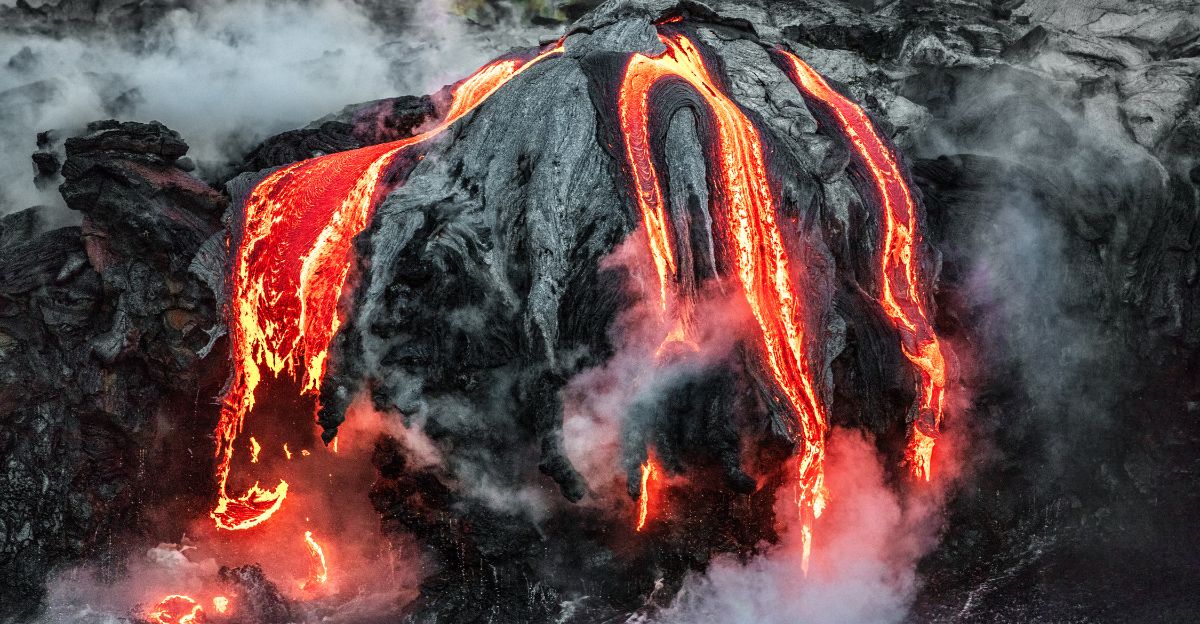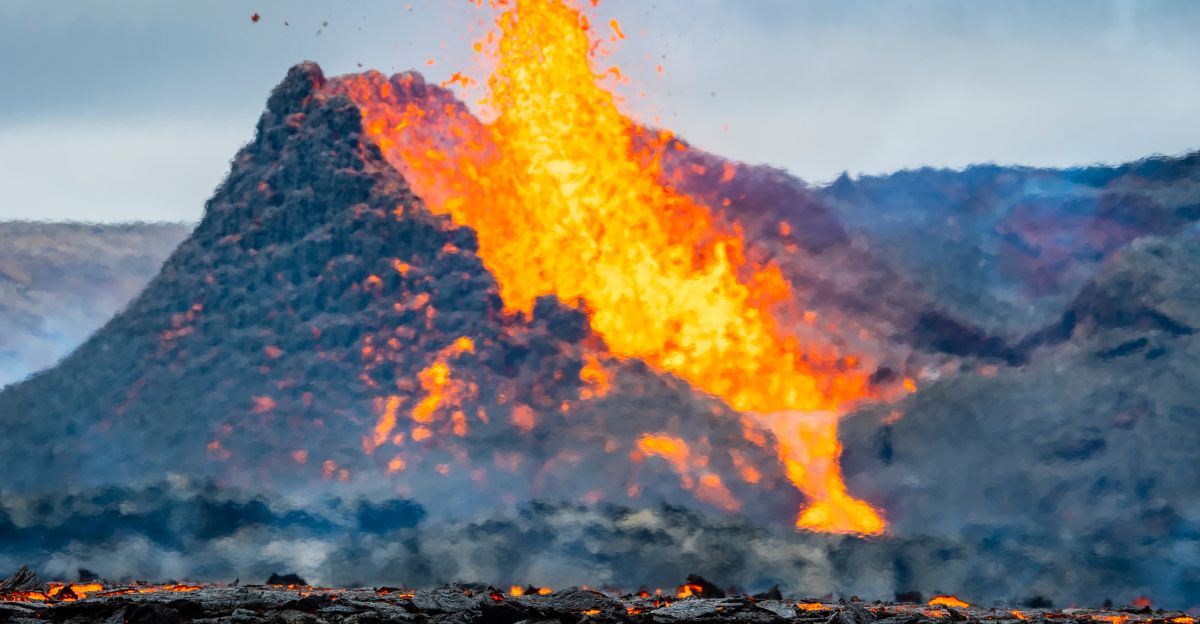
Yellowstone National Park, renowned for its geothermal wonders and breathtaking landscapes, sits atop one of the world’s most formidable volcanic systems—the Yellowstone supervolcano. Subtle movement deep beneath the surface raises questions about when the next eruption might occur.
The caldera of this volcano is 1,350 square miles wide and was formed around 640,000 years ago due to a cataclysmic eruption. This mighty volcano is capable of causing eight eruptions of magnitude.
Debunking the “Overdue” Eruption Myth

Many speculate that Yellowstone is long overdue to erupt, but this isn’t necessarily true. These volcanos are very unpredictable and don’t follow any type of schedule. Despite the last major eruption occurring over 640,000 years ago, current geological assessments do not indicate signs of an imminent catastrophic event.
The U.S. Geological Survey (USGS) maintains Yellowstone’s Volcano Alert Level at “NORMAL,” reflecting background activity levels. This means that we most likely won’t see an eruption soon, but that doesn’t mean it’s not possible.
This is still a very active volcano with shifting magma below the surface. Recent research has detected significant magma movements beneath Yellowstone, particularly in the northeastern region of the caldera, a shift from previously monitored western areas.
These shifts have led researchers to reevaluate potential eruption zones. With advanced techniques available, they can gain better insights into the activity below Yellowstone.
Magma Reservoirs and Eruption Potential

The magma beneath Yellowstone is stored in segregated underground reservoirs ranging from 2.5 to 30 miles below the surface. These reservoirs are one of the biggest reasons this volcano has not erupted yet. The distribution of magma into these reservoirs prevents concentrated buildup of magna, reducing the risk of an eruption.
There are two types of magma beneath Yellowstone: basaltic and rhyolitic. Rhyolitic magma can be found closer to the surface and is usually thicker due to its high silica content. Basaltic magma, on the other hand, can be found much deeper underground, and although it’s pretty dense, it flows easily.
Magma can significantly affect the type of eruption this volcano can have. The kind of fallout that can be expected depends entirely on the type of magma that gets released.
Understanding The Threat And Historical Eruptions

This supervolcano has erupted multiple times over the past million years, some of which we might not even be aware of. Three of those major eruptions happened over the last 2.1 million years. The most recent eruption, the Lava Creek eruption, occurred approximately 640,000 years ago.
This eruption created the current caldera and spewed vast amounts of volcanic material across North America. Earlier eruptions, such as the Huckleberry Ridge event 2.1 million years ago and the Mesa Falls eruption 1.3 million years ago, also left a significant geological footprint.
Scientists have used geological records to reconstruct these past events, which gives them a better idea of the volcano’s activity and the consequences of each eruption.
USGS states, “This comes to an average of about 725,000 years between eruptions. That being the case, there are still about 100,000 years to go.”
The Future of Yellowstone

Researchers have clarified that the chances of eruption any time soon are doubtful. The supervolcano is stable at the moment and is under rigorous observation.
The marvelous wonders of the world can be viewed without fear of a possible eruption. Yellowstone National Park has so much to offer in terms of geological wonders, and experiencing them firsthand is a bucket list moment indeed.
Explore more of our trending stories and hit Follow to keep them coming to your feed!

Don’t miss out on more stories like this! Hit the Follow button at the top of this article to stay updated with the latest news. Share your thoughts in the comments—we’d love to hear from you!







